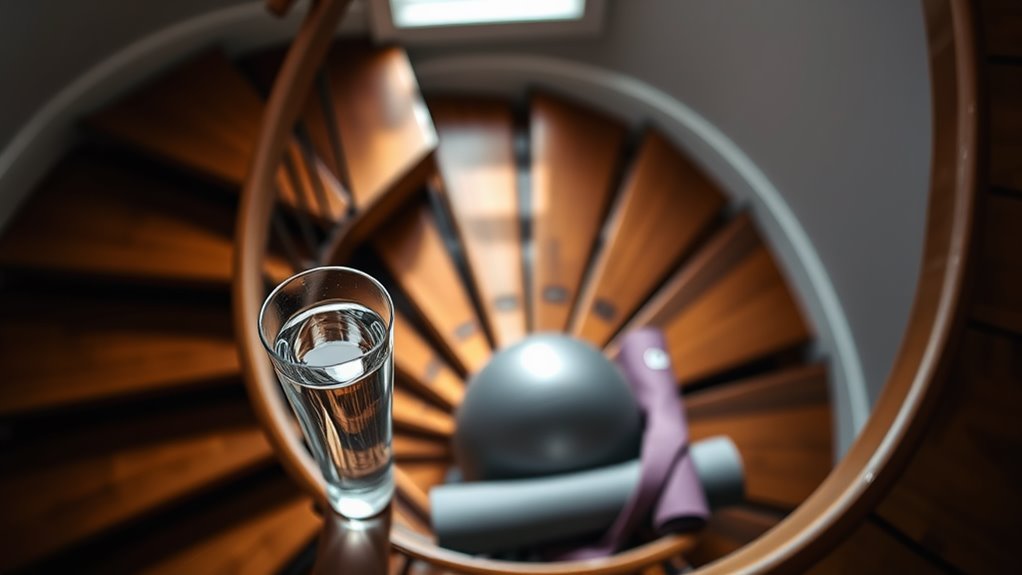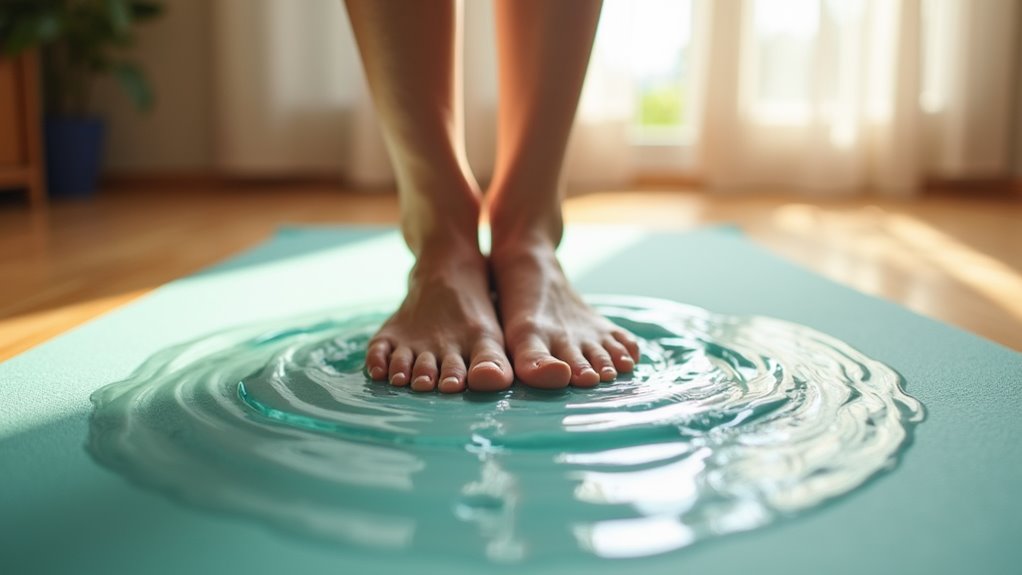This Remedy for Vertigo Helped Me Feel Balanced Again
My First Experience With Vertigo
The first time vertigo struck, I was lying in bed when the room began spinning violently around me. The sudden onset left me disoriented and unable to stand. My eyes darted frantically, trying to find a fixed point in space, but everything whirled relentlessly.
Nausea crept in as my vestibular system malfunctioned. I desperately searched for vertigo relief remedies online while battling waves of dizziness. The spinning sensation persisted for hours, making simple movements impossible.
This initial episode taught me that vertigo wasn’t just ordinary dizziness – it was an intense, debilitating condition requiring immediate attention and proper treatment. I later discovered that the common cause of vertigo is often dislodged calcium particles in the inner ear, prompting me to seek effective remedies.
Understanding the Root Causes
Your vertigo symptoms likely stem from disruptions in your inner ear’s vestibular system, where tiny calcium crystals can become dislodged and interfere with your spatial orientation.
Environmental factors, such as sudden head movements, bright lights, or certain visual patterns, can trigger or intensify vertigo episodes.
Chronic stress and anxiety can compound these issues by increasing muscle tension in your neck and shoulders, potentially affecting blood flow to your inner ear. Additionally, specific populations such as pregnant individuals may also experience vertigo due to hormonal changes and blood pressure fluctuations.
Inner Ear Balance Issues
Because inner ear disorders directly affect your vestibular system, they represent one of the primary causes of vertigo and balance disturbances.
Your semicircular canals contain fluid that helps detect head movement and position, while tiny calcium crystals in the utricle assist with linear motion sensing.
When these delicate structures become compromised through infection, injury, or age-related changes, you’ll experience dizziness and spatial disorientation.
Common conditions include benign paroxysmal positional vertigo (BPPV), vestibular neuritis, and Meniere’s disease. Each condition disrupts normal sensory processing between your inner ear and brain, leading to vertigo episodes.
Stress and Anxiety Impact
While physical conditions often trigger vertigo symptoms, persistent stress and anxiety can significantly amplify vestibular disturbances through complex neurological pathways.
Your body’s fight-or-flight response alters blood flow, muscle tension, and neural signaling, potentially worsening dizziness and spatial disorientation.
- Elevated cortisol levels disrupt inner ear fluid balance
- Anxiety-induced shallow breathing affects oxygen supply to the brain
- Muscle tension in neck and shoulders compromises blood flow
- Stress hormones interfere with vestibular compensation
- Panic reactions intensify sensation of spinning and unsteadiness
Understanding this mind-body connection helps you identify stress triggers and implement targeted coping strategies for vertigo management.
Environmental Trigger Factors
Environmental factors play a crucial role in triggering or exacerbating vertigo episodes, with specific conditions often serving as reliable predictors of symptom onset. You’ll notice that certain environmental elements consistently affect your balance and spatial orientation.
| Trigger Factor | Impact on Vertigo |
|---|---|
| Bright Lights | Visual disturbance and disorientation |
| Loud Sounds | Inner ear pressure and dizziness |
| Air Pressure | Balance disruption during weather changes |
| Temperature | Blood flow alterations affecting equilibrium |
Understanding these environmental triggers helps you anticipate and manage symptoms effectively. Monitor your surroundings for sudden changes in lighting, noise levels, barometric pressure, and temperature fluctuations to minimize vertigo episodes.
Common Symptoms and Warning Signs
You’ll want to monitor early warning signs like mild dizziness, a sense of tilting, or feeling off-balance when changing positions.
When vertigo strikes suddenly, you may experience intense spinning sensations accompanied by nausea, vomiting, and difficulty maintaining your balance.
These symptoms can appear without warning and may worsen with head movements, so it’s crucial to recognize them quickly for proper medical intervention.
Recognizing Early Warning Signs
Recognizing early symptoms of vertigo can help prevent severe episodes and enable timely intervention.
You’ll want to monitor these warning signs closely and document when they occur to share with your healthcare provider.
- Mild sensation of spinning or tilting, especially when changing head positions
- Slight difficulty maintaining balance while walking or standing
- Brief episodes of visual disturbances, including blurred or jumping vision
- Unexplained feelings of motion sickness or nausea without actual movement
- Intermittent sensations of fullness or pressure in one or both ears
Pay attention to the frequency and intensity of these symptoms, as they often escalate gradually.
Early detection allows for proactive treatment approaches and better management of your condition.
When Vertigo Strikes Suddenly
While early warning signs may develop gradually, acute vertigo attacks can occur without warning and cause intense, debilitating symptoms.
You’ll experience sudden spinning sensations, as if you or your surroundings are rotating violently. Your balance will be severely compromised, making it difficult to stand or walk.
During these episodes, you may also develop nystagmus – rapid, uncontrollable eye movements.
Nausea, vomiting, and excessive sweating often accompany the dizziness. You might notice increased sensitivity to head movements and changes in position.
Tinnitus, hearing changes, or a feeling of fullness in your ear can signal an inner ear-related vertigo attack.
My Journey Through Different Treatments
I struggled through numerous vertigo treatments before finding an effective solution. Each approach offered different benefits and drawbacks, leading me through a methodical process of trial and error.
Working closely with healthcare providers, I documented my responses to various interventions.
- Vestibular rehabilitation therapy improved my balance through targeted exercises
- Canalith repositioning maneuvers addressed BPPV symptoms effectively
- Prescription medications reduced acute episodes but caused drowsiness
- Dietary modifications eliminated trigger foods and reduced occurrences
- Alternative therapies like acupuncture provided temporary relief
The journey required patience and persistence, but systematically exploring treatment options ultimately led to managing my condition successfully.
The Epley Maneuver: A Game-Changer
After discovering the Epley maneuver through my vestibular specialist, this repositioning technique proved transformative in treating my Benign Paroxysmal Positional Vertigo (BPPV).
You’ll need to lie back on an exam table while your doctor guides you through a series of head movements. These precise movements help relocate the displaced calcium crystals in your inner ear back to their proper chamber.
Each position is held for about 30 seconds. You might experience brief dizziness during the procedure, but that’s normal. Most patients see improvement after one or two sessions, though you may need to repeat the maneuver at home.
Lifestyle Changes That Made a Difference
Beyond medical interventions, several lifestyle modifications proved essential in managing vertigo symptoms.
These evidence-based changes can significantly reduce the frequency and intensity of vertigo episodes while improving overall balance and stability.
-
Maintain consistent sleep patterns with 7-8 hours nightly to regulate your vestibular system.
-
Adopt a low-sodium diet (under 2,000mg daily) to minimize fluid retention in the inner ear.
-
Stay hydrated with 2-3 liters of water daily to optimize inner ear fluid balance.
-
Practice gentle head movements and position changes to prevent sudden onset.
-
Eliminate trigger foods, particularly those high in caffeine, alcohol, or processed ingredients.
Natural Remedies and Supplements
Several natural remedies and supplements have demonstrated promising results in managing vertigo symptoms when used alongside conventional treatments.
Ginger root can help reduce dizziness and nausea, while vitamin D supplementation may improve inner ear function. Studies suggest that Ginkgo biloba enhances blood flow to the brain, potentially decreasing vertigo episodes.
You’ll find that magnesium supplements can support vestibular health, particularly if you’re deficient.
Coenzyme Q10 (CoQ10) has shown effectiveness in treating specific types of vertigo, especially when related to migraine-associated dizziness.
Consider adding B vitamins to your regimen, as they’re crucial for maintaining proper nerve function and balance. Additionally, staying hydrated can help maintain inner ear fluid balance, which is essential in minimizing vertigo symptoms.
Building a Support System
Recovery from vertigo requires more than medical interventions alone – establishing a reliable support network is crucial for managing symptoms and maintaining quality of life.
You’ll need to identify and connect with individuals who understand your condition and can provide assistance during episodes.
- Identify a designated emergency contact who’s familiar with your vertigo symptoms
- Join support groups or online communities dedicated to vestibular disorders
- Communicate your needs clearly to family members and close friends
- Establish relationships with healthcare providers who specialize in balance disorders
- Create a network of colleagues who can assist during workplace episodes
Tips for Managing Daily Activities
Living with vertigo requires strategic modifications to your daily routine, as common activities can trigger symptoms or pose safety risks.
When bathing, install grab bars and use a shower chair to prevent falls. Don’t make sudden head movements while getting up from bed – instead, rise slowly and sit for a moment before standing.
Keep your living space well-lit and remove trip hazards like loose rugs. In the kitchen, use electric appliances rather than gas stoves, and store frequently-used items at waist level. You’ll also want to avoid reaching overhead or bending down repeatedly.







